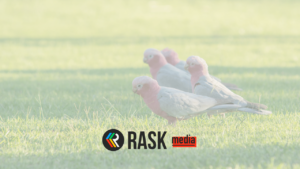As you may know, this is the general version. Keep in mind, general doesn’t necessarily equal ‘good’. So, at the bottom of this article, we’ll provide some further resources to complement our potential indicative valuations. Basically, it goes without saying but these valuations are not guaranteed.
Bank shares like Bank of Queensland Limited, Bendigo & Adelaide Bank Ltd (ASX: BEN) and Westpac Banking Corp (ASX: WBC) are very popular in Australia because they tend to have a stable dividend history, and often pay franking credits.
In this article, we’ll explain the basics of investing in ASX bank shares. But if you’re interested in understanding the value of dividend investing in Australia (i.e. the benefits of franking credits), check out this video from the education team at Rask Australia.
To access our valuation models, videos and tutorials, consider subscribing to the Rask Australia YouTube channel. You will receive the latest (and free) value investing videos from our analysts. Click here to subscribe.
Ratio analysis
The PE ratio compares a company’s share price (P) to its yearly earnings per share (E) (note: ‘earnings’ is another word for profit).
There are three simple ways to quickly use the PE ratio. First, you can use ‘intuition’ and say ‘if it’s low, I’ll buy shares’ or ‘if it is above 40x, I’ll sell shares’ (whatever works for you).
Secondly, you can compare the PE ratio of a stock like BOQ with WBC or the sector average. Is it higher or lower? Does it deserve to be more expensive or cheaper? Third, you can take the earnings/profits per share of the company you’re valuing and multiply that number by a PE multiple that you believe is appropriate. For example, if a company’s profit per share (E) was $5 and you believe the stock is ‘worth at least 10x its profit’ it would have a valuation, according to you, of $5 x 10 = $50 per share.
If we take the BOQ share price today ($7.57), together with the earnings (aka profits) per share data from its 2020 financial year ($0.511), we can calculate the company’s PE ratio to be 14.8x. That compares to the banking sector average PE of 23x.
Next, take the profits per share (EPS) ($0.511) and multiply it by the average PE ratio for BOQ’s sector (Banking). This results in a ‘sector-adjusted’ PE valuation of $11.86.
Beyond BOQ’s dividend yield
A dividend discount model or ‘DDM’ is a more robust way of valuing companies in the banking sector.
DDM valuation models are some of the oldest proper valuation models used by professional analysts or brokers on Wall Street (note: just because they’re old doesn’t make them ‘good’). A DDM model takes the most recent full year dividends (e.g. from last 12 months or LTM), or forecast dividends for next year, and then assumes the dividends remain consistent or grow for the forecast period.
To make this DDM easy to understand, we will assume last year’s dividend payment ($0.12) climbs at a fixed rate each year.
Next, we pick the ‘risk’ rate or expected return rate. This is the rate at which we discount the future dividend payments back to today’s dollars. The higher the ‘risk’ rate, the lower the share price valuation.
We’ve used a blended rate for dividend growth and a risk rate between 6% and 11%, then got the average.
This simple DDM valuation of BOQ shares is $2.29. However, using an ‘adjusted’ dividend payment of $0.39 per share, the valuation goes to $6.99. The expected dividend valuation compares to Bank of Queensland Limited’s share price of $7.57. Since the company’s dividends are fully franked, you might choose to make one further adjustment and do the valuation based on a ‘gross’ dividend payment. That is, the cash dividends plus the franking credits (available to eligible shareholders). Using the forecast gross dividend payment ($0.56), our valuation of the BOQ share price calculation to $9.99.
More research
Simple valuation models like these can be handy tools for analysing and valuing a bank share like Bank of Queensland Limited. And while these models can even make you feel warm and fuzzy inside because you have ‘put a value on it’.
That said, it’s far from a perfect valuation (as you can see). While no-one can ever guarantee a return, there are things you can (and probably should) do to improve the valuation before you consider it as a worthwhile yardstick.
For instance, studying the growth or increase in total loans on the balance sheet is a very important thing to do: if they’re growing too fast it means the bank could be taking too much risk; too slow and the bank might be too conservative. Then, study the remainder of the financial statements for risks.
Areas to focus on include the provisions for bad loans (income statement), their rules for assessing bad loans (accounting notes) and the sources of capital (wholesale debt markets or customer deposit). On the latter, take note of how much it costs the bank to get capital into its business to lend out to customers, keeping in mind that overseas debt markets are typically more risky than customer deposits due to exchange rates, regulation and the fickle nature of investment markets.



